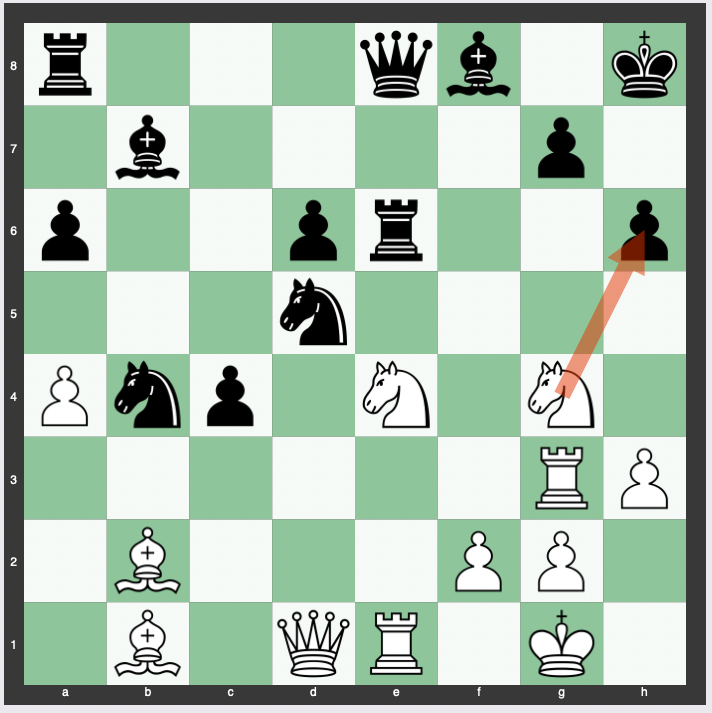In the annals of chess history, there are games that stand out not just for their technical brilliance, but for the sheer audacity of the play.
One such game is the 20th game between Garry Kasparov and Anatoly Karpov during the 1990 World Chess Championship.
This game – referred to in the video “Kasparov’s Insane Calculations (Mind-Boggling)” – is a testament to the genius of Kasparov and the depth of his understanding of the game.
The Opening: A Classical Ruy-Lopez
The game began with the Ruy Lopez, a time-tested opening that has been a favorite of many world champions.
The moves 1. e4 e5 2. Nf3 Nc6 3. Bb5 are the hallmark of this opening.
By the 7th move, with 7…d6, Karpov, playing black, signaled his intention to play the Closed Ruy-Lopez, a solid and strategic choice.
They eventually went into the Zaitsev Variation of the Ruy Lopez.
The Middle Game: Tension and Complexity
As the game progressed, both players maneuvered their pieces to optimal squares, with Kasparov opting for a pawn center with 10. d4 and Karpov responding with …Re8 and …Bf8, typical moves in this setup.
The tension began to build with 13. Bc2 exd4 14. cxd4, opening up the center and creating imbalances.
Kasparov’s Genius: The Deep Calculations Begin
The real magic began around move 17 with 17…f5, a pawn break that aimed to challenge Kasparov’s center.
This is the point where we’re finally out of chess theory and into uncharted territory for both players. In other words, they can’t use their memory anymore.
However, Kasparov’s response, 18. Rae3, was the beginning of a deep and intricate plan.
By doubling his rooks on the e-file, he was preparing for a central breakthrough.
The game reached its climax with the sequence starting from 23…Nxe4.
Here, Kasparov unleashed a series of tactical blows, starting with 24. Rg3, putting pressure on Karpov’s king.
Karpov’s Critical Error: 25…Qe8
It was at this juncture that Karpov made the critical error with 25…Qe8.

This move, while seemingly natural, aiming to attack a4 and relieve the pressure by giving the diagonal to black’s queen, was a grave miscalculation.
Kasparov’s response, 26. Nxh6, was a brilliant piece sacrifice that ripped open Karpov’s king’s defenses.
The subsequent moves, with the queen and knight coordinating perfectly, put Karpov’s king in a deadly net.
Move Order
1. e4 e5 2. Nf3 Nc6 3. Bb5 a6 4. Ba4 Nf6 5. O-O Be7 6. Re1 b5 7. Bb3 d6 8. c3 O-O 9. h3 Bb7 10. d4 Re8 11. Nbd2 Bf8 12. a4 h6 13. Bc2 exd4 14. cxd4 Nb4 15. Bb1 c5 16. d5 Nd7 17. Ra3 f5 18. Rae3 Nf6 19. Nh2 Kh8 20. b3 bxa4 21. bxa4 c4 22. Bb2 fxe4 23. Nxe4 Nfxd5 24. Rg3 Re6 25. Ng4 Qe8 26. Nxh6 c3 27. Nf5 cxb2 28. Qg4 Bc8 29. Qh4+ Rh6 30. Nxh6 gxh6 31. Kh2 Qe5 32. Ng5 Qf6 33. Re8 Bf5 34. Qxh6+ Qxh6 35. Nf7+ Kh7 36. Bxf5+ Qg6 37. Bxg6+ Kg7 38. Rxa8 Be7 39. Rb8 a5 40. Be4+ Kxf7 41. Bxd5+
Karpov resigned in this position:

What Makes This Game So Impressive?
Several factors contribute to the awe that this game inspires:
- Depth of Calculation: Kasparov’s ability to foresee the consequences of his moves – and many, many different variations – several moves in advance, was nothing short of phenomenal. His tactical vision and understanding of the position allowed him to make seemingly risky decisions with confidence.
- Bravery: Opting for a piece sacrifice at the highest level of competition requires not just skill but immense courage. Kasparov’s decision to sacrifice his knight on h6 is a testament to his fearless approach to the game.
- Precision: After the sacrifice, every move was played with pinpoint accuracy. There was no room for error, and Kasparov executed his plan flawlessly.
Videos of ‘Kasparov’s Insane Calculations’
Below is the original video:
Kasparov’s Calculations – Mindboggling!!! (very instructive)
And here is popular chess vlogger GothamChess’s narration of the game:
Garry Kasparov’s INSANE Calculations (Explained!)
Conclusion
“Kasparov’s Insane Calculations” is not just a game; it’s a masterpiece.
It showcases the beauty of chess, where deep strategy, fearless tactics, and impeccable execution come together to create one of the most famous games of all time.


